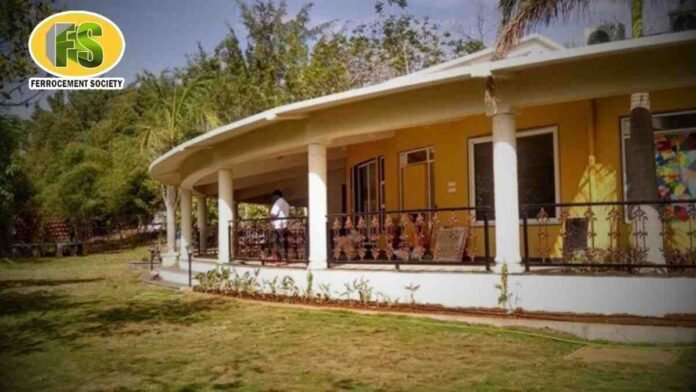Pune, India – September 2025: A silent revolution is reshaping construction, and at its core lies ferrocement—a material celebrated for its strength, flexibility, and eco-friendly qualities. Leading this movement in India is the Ferrocement Society, headquartered in Pune, under the guidance of President P. P. Lele.
The spotlight now turns to the 8th International Conference on Ferrocement, set for 12–13 September 2025 in Pune. Jointly organized by the Indian Ferrocement Society and Bhanuben Nanavati College of Architecture, Karvenagar, the event will explore the theme: “Art, Science and Technology of Ferrocement Construction.”
Rediscovering a Forgotten Innovation
Though not new, ferrocement has returned to prominence. First experimented with in 1849 by Italian architect Joseph-Louis Lambot, who built the first ferrocement boat, the material lost ground to reinforced cement concrete (RCC). Today, however, engineers and architects are revisiting ferrocement to overcome RCC’s limitations.
Its method is simple yet powerful: layers of wire mesh are filled with rich cement mortar. This creates structures that are exceptionally strong, ductile, watertight, impact-resistant, and versatile in design. Free from coarse aggregates and formwork, ferrocement is not only eco-friendly but also cost-efficient—qualities that align with modern sustainable construction.
Why Ferrocement is Gaining Ground in India
India has already seen several success stories:
-
Residential bungalows in Noida, Bhugaon, and Satara
-
Canal linings in Nashik
-
Domes and shells in Buldhana
“Architectural planning of ferrocement buildings is now becoming very popular, and people are actively demanding it,” says Er. Nandkumar Jadhav of Deep Ferrocement, known for landmark projects in Satara.
Government agencies are also backing the technology:
-
The Government of Maharashtra has published a handbook for engineers.
-
The Bureau of Indian Standards (BIS) is drafting a dedicated Code of Practice.
-
Textbooks and manuals authored by Dr. B. N. Divekar are now part of the civil engineering syllabus at Savitribai Phule Pune University.
National and International Recognition
India has long been a frontrunner in ferrocement advocacy. The Ferrocement Society has:
-
Hosted seven National Conventions
-
Supported FERRO-1 to FERRO-14 International Conferences worldwide
-
Conducted 150+ workshops across architecture and engineering colleges
The 8th International Conference in Pune is expected to be a milestone, featuring experts such as Dr. Liberato Ferrara (Italy), Dr. Pete Winslow (UK), and Dr. Antonie Naaman (USA). Discussions will cover:
-
Advances in ferrocement composites
-
Affordable housing models
-
Retrofitting and rehabilitation techniques
-
Sustainable construction practices
-
Architectural innovations
With a nominal entry fee of INR 1000 (including breakfast and lunch), the event is designed to encourage participation from students, professionals, and enthusiasts alike.
The Road Ahead: From Workshops to Precast Industries
Experts predict that ferrocement could soon revolutionize India’s construction sector. Emerging trends include:
-
Precast ferrocement factories, similar to those in Singapore
-
Replacement of pre-stressed concrete components with ferrocement, thanks to its high tensile strength and ductility
As P. P. Lele notes:
“Intelligent use of ferrocement in construction is no longer just an idea—it is becoming a necessity. With standard codes, design manuals, and growing awareness, ferrocement is set to take its rightful place in the industry.”
Conclusion: The Future of Sustainable Construction
From eco-friendly homes to earthquake-resistant buildings, ferrocement is proving to be more than an alternative—it is the future of construction in India. With Pune at the epicenter, India is not just adopting ferrocement but is poised to lead the world in ferrocement innovation.



